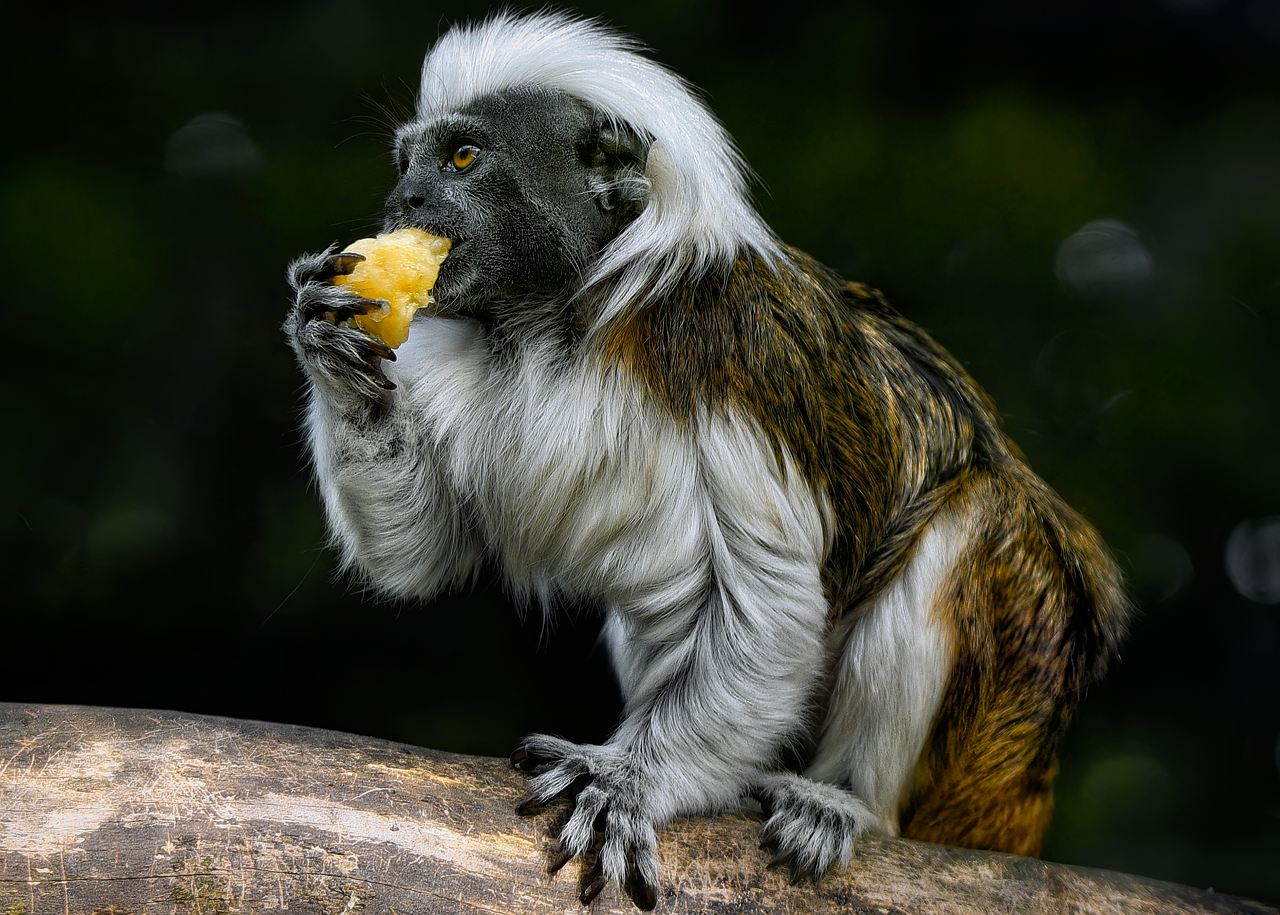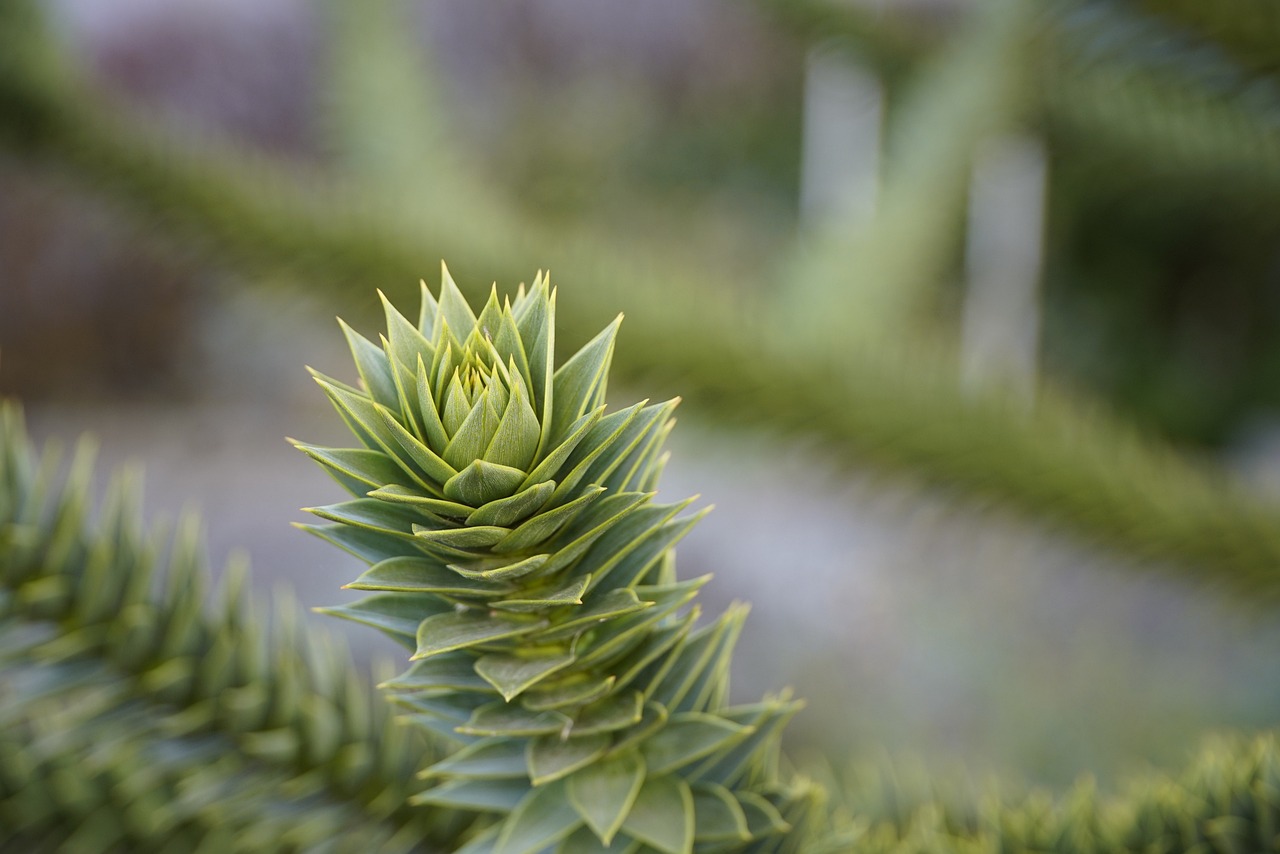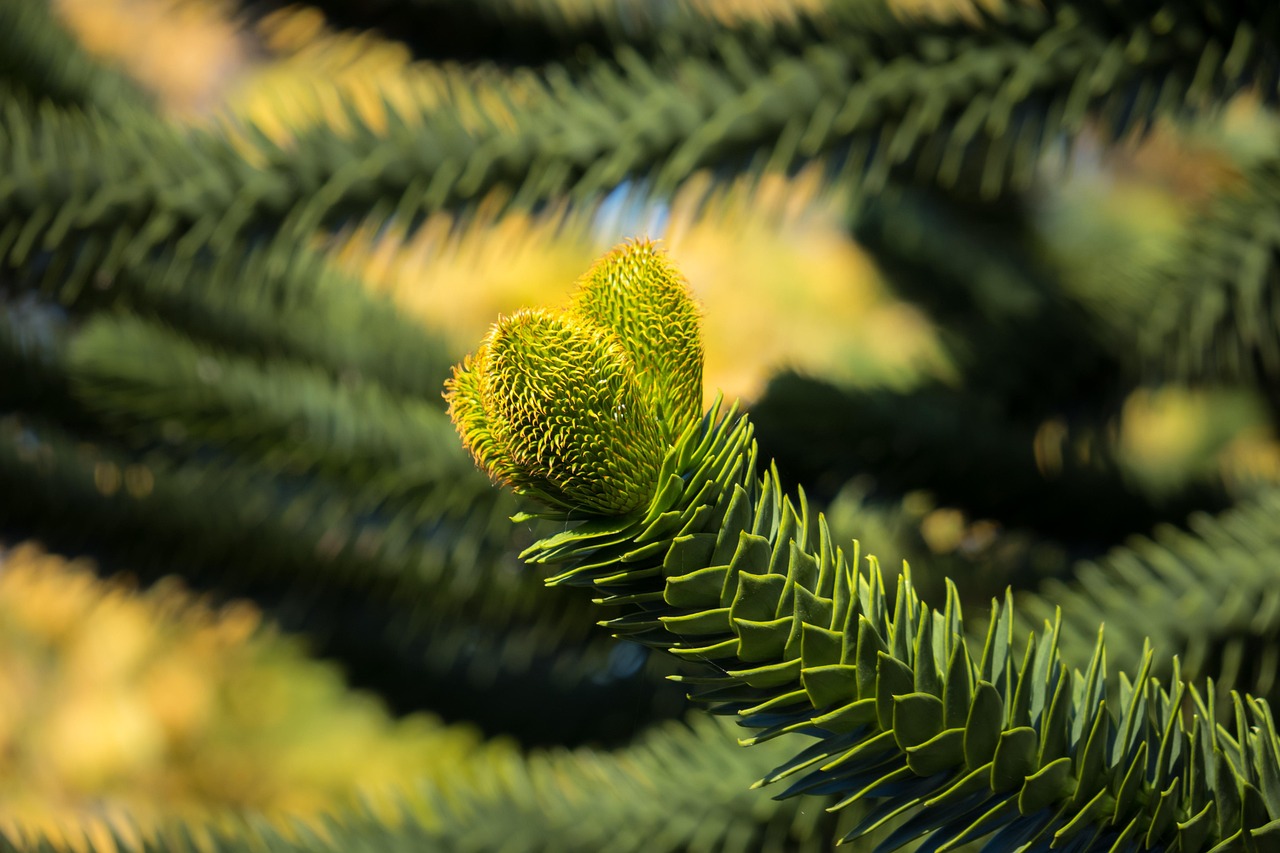The Monkey Puzzle Tree, known for its unique appearance, has a moderate growth rate of about 12 to 24 inches per year under optimal conditions. This tree can be an intriguing addition to any garden, providing both aesthetic appeal and a conversation starter.
Understanding the Monkey Puzzle Tree
The Monkey Puzzle Tree, scientifically known as Araucaria araucana, is native to the southern regions of South America, particularly Chile and Argentina. It is distinguished by its spiky, whorled branches and dark green, needle-like leaves. This evergreen conifer is not just visually striking; it also has historical significance and cultural value in its native habitat.

Originally named for its unusual appearance, the Monkey Puzzle Tree poses a challenge to monkeys trying to climb it. Its unique structure makes it stand out in gardens, parks, and landscapes. The tree can grow quite tall, often reaching heights of 60 to 80 feet, making it suitable for spacious gardens or as a feature in arboretums.
One of the reasons gardeners are drawn to the Monkey Puzzle Tree is its moderate growth rate. This characteristic enables gardeners to plan their landscapes effectively without the tree overpowering other plantings too quickly. However, understanding the growth rate and conditions that influence it is crucial for successful cultivation.
Growth Rate and Conditions
The growth rate of the Monkey Puzzle Tree can vary significantly based on several environmental factors. Here are some key conditions that influence its growth:

- Soil Quality: Well-drained, sandy or loamy soils facilitate better root development.
- Watering: Regular watering is vital, especially during dry spells, but overwatering can lead to root rot.
- Sunlight: Full sun exposure is preferred for optimal growth. The tree thrives in bright, well-lit environments.
- Temperature: While it is hardy, the Monkey Puzzle Tree prefers mild climates without extreme temperatures.
In terms of growth metrics, here is a summary of what you can expect in terms of height over the years:
| Age (Years) | Approximate Height (Feet) |
|---|---|
| 1 | 1 – 2 |
| 5 | 5 – 10 |
| 10 | 15 – 25 |
| 20 | 30 – 50 |
The initial growth phase is relatively slow. However, once established, the tree can accelerate its growth rate significantly. Patience is essential when growing a Monkey Puzzle Tree, as it may take several years before it reaches a height that showcases its majestic form.
Cultivation Tips
If you are considering adding a Monkey Puzzle Tree to your garden, here are some tips for successful cultivation:

- Select the Right Location: Choose an area with ample sunlight and space for the tree’s full height.
- Prepare the Soil: Ensure the soil is well-draining. Amend it with organic matter if necessary.
- Water Wisely: Keep the soil consistently moist but not soggy. Use mulch to retain moisture and regulate temperature.
- Monitor Growth: Regularly check for signs of pests or diseases that could hinder growth.
The investment in time and care will reward you with a unique addition to your garden that draws interest from visitors and provides a stunning backdrop for landscaping designs.
As you nurture your Monkey Puzzle Tree, take note of its growth patterns and adapt your care regimen accordingly. This adaptability will ensure that your tree thrives and contributes to the beauty of your outdoor space for many years to come.
Environmental Factors Influencing Growth
The growth rate of the Monkey Puzzle Tree is significantly influenced by various environmental factors. Understanding these elements can help gardeners create optimal conditions for their trees. Here are some key factors that affect growth and development:
Soil Composition
The composition of the soil plays a vital role in the health of the Monkey Puzzle Tree. It thrives best in:

- Sandy Soils: These promote good drainage, reducing the risk of root rot.
- Loamy Soils: A mix of sand, silt, and clay provides balanced nutrients and moisture retention.
- pH Levels: The ideal soil pH is between 6.0 and 7.0, which allows for optimal nutrient uptake.
Conducting a soil test can help determine the existing nutrient levels and pH, allowing for necessary amendments to promote healthy growth.
Climate Considerations
The Monkey Puzzle Tree is best suited to specific climate conditions. Here are some aspects to consider:
- Temperature: This tree prefers moderate temperatures. Extreme cold or heat can stunt growth.
- Humidity: A humid environment can enhance growth, although the tree is fairly adaptable.
- Rainfall: Adequate rainfall during the growing season supports healthy development. However, excessive rain can lead to waterlogged roots.
Pest and Disease Management
Maintaining the health of a Monkey Puzzle Tree involves vigilance against pests and diseases. Below are common threats and methods to manage them:
Common Pests
Several pests may target the Monkey Puzzle Tree, including:
- Aphids: These small insects suck sap from the leaves, leading to yellowing and wilting.
- Spider Mites: These pests create webs on the foliage and thrive in dry conditions.
- Scale Insects: These attach to branches and can weaken the tree by feeding on its sap.
Regular inspections can help catch infestations early. If found, insecticidal soap or neem oil can effectively control these pests.
Disease Management
The Monkey Puzzle Tree can also be susceptible to various diseases. Here are a few to watch for:
- Root Rot: Caused by overwatering or poorly draining soil, this disease can be fatal if not addressed promptly.
- Fungal Infections: Leaf spot diseases may occur, especially in humid conditions. Proper air circulation is essential.
To mitigate disease risks, ensure proper watering practices and maintain good soil health. Additionally, pruning dead or affected branches can improve airflow around the tree.
Propagating the Monkey Puzzle Tree
If you wish to grow more Monkey Puzzle Trees, propagation can be done through seeds or cuttings. Each method has its advantages and challenges.
Seed Propagation
Seed propagation is a common method for growing new trees. Here’s how you can do it:
- Collect Seeds: Gather seeds from mature cones during late summer or early fall.
- Pre-treatment: Soak seeds in water for 24 hours to soften the hard outer shell.
- Sow Seeds: Plant seeds in well-draining soil, covering them lightly.
- Water Regularly: Keep the soil moist but not soggy until germination occurs, which may take several weeks.
Cultivation from Cuttings
Cultivating from cuttings is less common but possible. Here’s a brief guide:
- Select Healthy Branches: Choose healthy branches from an established tree during late spring.
- Cut and Prepare: Cut a 6-8 inch segment and remove lower leaves.
- Plant Cuttings: Place in a pot with well-draining soil and keep moist until roots develop.
Regardless of the propagation method chosen, patience is key, as it may take several years for new trees to mature fully.
Landscape Uses for the Monkey Puzzle Tree
The Monkey Puzzle Tree is not only valued for its unique growth rate but also for its striking appearance and versatility in landscape design. This tree can serve various purposes in both residential and commercial gardens.
Ornamental Features
One of the primary reasons gardeners choose the Monkey Puzzle Tree is its ornamental value. Its architectural form and spiky foliage create a dramatic focal point. Here are some ways it can enhance a landscape:
- Stand-Alone Specimen: Placing a single Monkey Puzzle Tree in a prominent location can draw attention and become a conversation piece.
- Group Plantings: Planting several trees together can create an eye-catching grove, especially when spaced appropriately to allow for their mature size.
- Contrast with Other Plants: The tree’s unique texture and shape can complement softer, more traditional plants, adding depth to the garden.
Wildlife Attraction
The Monkey Puzzle Tree also offers ecological benefits by attracting various wildlife. It serves as:
- Food Source: The seeds of the Monkey Puzzle Tree are edible and can attract birds and other wildlife.
- Nesting Site: Its sturdy branches provide excellent nesting opportunities for birds.
- Insect Habitat: The tree can host various insects, contributing to the local ecosystem.
Cultural Significance and Symbolism
The Monkey Puzzle Tree holds cultural significance in its native regions. In Chile, it is known as “pehuén” and is considered a national symbol. The tree has a rich history and is deeply rooted in local culture.
Historical Context
Historically, the Monkey Puzzle Tree has been associated with indigenous peoples who have utilized its seeds as a food source for centuries. The seeds are nutritious and can be roasted or ground into flour. This aspect of the tree highlights its importance beyond ornamental use.
Symbolic Meaning
In addition to its historical context, the Monkey Puzzle Tree carries symbolic meanings that resonate with many gardeners:
- Resilience: The tree’s ability to thrive in challenging conditions symbolizes strength and perseverance.
- Uniqueness: Its unusual appearance serves as a reminder of individuality and the beauty of diversity in nature.
Maintenance Practices for Healthy Growth
<pTo ensure that your Monkey Puzzle Tree continues to thrive, certain maintenance practices should be observed throughout its life. These practices help mitigate potential issues and promote healthy growth.
Pruning Techniques
Pruning is essential for maintaining the health and shape of the Monkey Puzzle Tree. Here’s how to approach it:
- Timing: The best time to prune is late winter or early spring before new growth begins.
- Remove Dead or Diseased Branches: Regularly inspect the tree and remove any dead or infected branches to prevent disease spread.
- Shaping: Light pruning can help maintain an attractive shape without compromising the tree’s natural form.
Fertilization Practices
The Monkey Puzzle Tree generally requires minimal fertilization. However, applying a balanced fertilizer during the growing season can support healthy growth, particularly if the soil lacks nutrients. Here are some tips:
- Select Quality Fertilizer: Use a slow-release, balanced fertilizer that contains nitrogen, phosphorus, and potassium.
- Application Timing: Fertilize in early spring as new growth begins.
- Avoid Over-Fertilization: Too much fertilizer can lead to excessive growth and weaken the tree.
Irrigation Practices
Irrigation is crucial, especially during dry periods. Here are recommended practices:
- Deep Watering: Water deeply once or twice a week rather than frequent shallow watering to encourage deep root growth.
- Monitor Soil Moisture: Use a moisture meter or check soil moisture levels manually to avoid overwatering.
By implementing these maintenance practices, your Monkey Puzzle Tree can thrive and contribute to your garden’s overall appeal for many years. Proper care will ensure that this unique species remains a standout feature in your landscape design.
Additional Considerations for Growing Monkey Puzzle Trees
When adding a Monkey Puzzle Tree to your garden, there are several additional considerations to keep in mind to ensure its successful growth and integration into your landscape. These factors can enhance your overall gardening experience and lead to a healthier tree.
Choosing the Right Variety
While the standard Monkey Puzzle Tree is the most recognized, there are several cultivars available. Each may have different characteristics, including growth rate and hardiness. When selecting a variety, consider:
- Growth Habit: Some cultivars may have a more compact growth habit, making them suitable for smaller gardens.
- Cold Hardiness: Certain varieties may be more resilient to colder climates.
- Appearance: Different cultivars might have varying foliage colors and textures, allowing for unique landscaping options.
Seasonal Care
Understanding the seasonal needs of the Monkey Puzzle Tree can help optimize its growth and health. Here are some seasonal care tips:
- Spring: This is the time for fertilization and observing new growth. Ensure adequate moisture as temperatures rise.
- Summer: Monitor for pests and watering needs as heat increases. Mulching can help retain soil moisture.
- Fall: Prepare the tree for winter by reducing watering as temperatures drop. Pruning can also be done at this time if needed.
- Winter: Protect young trees from frost and extreme temperatures with mulch or protective coverings.
Common Mistakes to Avoid
Many gardeners face challenges when growing Monkey Puzzle Trees. Here are some common mistakes to avoid:
- Overwatering: This is one of the most significant issues leading to root rot. Always ensure proper drainage.
- Neglecting Pest Management: Failing to check for pests can lead to infestations that harm the tree.
- Choosing Poor Locations: Planting in shaded areas or areas with poor soil can hinder growth.
Conclusion
The Monkey Puzzle Tree is a captivating addition to any garden, offering unique visual appeal and ecological benefits. With its moderate growth rate, distinctive appearance, and cultural significance, it has the potential to be both a focal point and a conversation starter in your landscape.
By understanding its growth requirements, including soil conditions, watering practices, and seasonal care, gardeners can cultivate a healthy Monkey Puzzle Tree that thrives for years. Additionally, being mindful of common mistakes and ensuring pest management will contribute to its longevity.
Ultimately, the Monkey Puzzle Tree not only enhances garden aesthetics but also connects gardeners with nature’s diversity and resilience. As you embark on your journey with this remarkable tree, embrace the beauty it brings to your outdoor space while enjoying the process of nurturing it through its various stages of growth.
